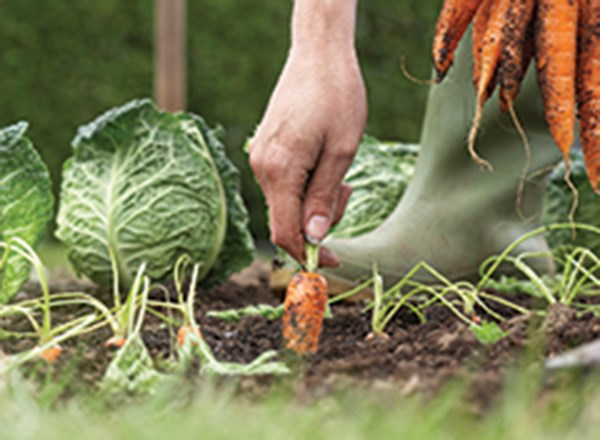As the days get sunnier and the soil starts to warm, planting vegetables is on people’s minds. Nothing beats the taste of vegetables fresh from the garden. If you are a novice to vegetable planting, there are a number of plants you can start from seed that are truly simple. Lettuce, peas, beans, radish and the like are a great place to start.
I get to talk to a lot of people about their gardens, and one of the most common complaints I hear is, “I can’t grow carrots.” So let’s get down to the basic premise of growing carrots and contributing to your successful carrot harvest this year.
For starters, carrots are incredibly small. The seeds are tiny, so it is difficult to sow them efficiently. If you’re new to carrot growing and you want to be able to sow them effectively, it’s worth the extra money to buy pelleted seeds or seed tape.
Seed tapes have been popular for years and if you are the DIY type of person you can make it yourself. Seed tapes are awesome for veggies we tend to plant too thickly such as carrots. You can cut the seed tape – which has pre-spaced seeds already on it – in any length, so it works in any type of garden. Organic gardeners need not fear, as the tape is completely biodegradable and organic; it breaks down naturally in the soil.
The first step to growing good quality carrots is to prep the soil. Provide a loamy and clear soil with no obstacles like roots or rocks that could impede growth. Carrots like a soil that is rich in organic matter, so compost is your friend. Be careful not to use fertilizers that are high in nitrogen or fresh manure that has not been composted carefully. Both of these will lend themselves to growing a very bushy top of the carrot with only a spindly root underneath.
Extremes of heat and cold and wet and dry are also problematic for carrot growth, and you will end up with a stunted carrot later.
The trick with carrots is to sow them shallowly (1/2” deep) and well spaced. You want to maintain constant moisture in the top layer of soil till they sprout. Sometimes this can take two to three weeks, so be patient. If you give the garden a good soak and water deeply before you plant, this can help with moisture retention.
One tip I have been using for years is to plant radish or turnip seeds among the carrots when you first sow them. Both of these seeds germinate very quickly and they break up the crust on the top layer of soil and mark the rows till the carrots germinate. Pick the tiny seedlings when they emerge and use them in salads. Delicious.
You can plant early in the spring (now) and then stagger your sowings every couple of weeks so you will have a continual fresh harvest throughout the growing season. You can plant carrot seeds for most of the season up until the middle of August.
If you planted your carrots thickly, you will need to thin them once they come up as they don’t like to grow in an overcrowded environment. Weeding is essential, too; weed often and early. Try weeding by hand as they are delicate and they don’t like the competition to get established.
After the allotted growing time has passed, you can start to pull up one or two carrots to check readiness.
Happy planting!



